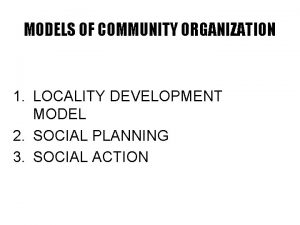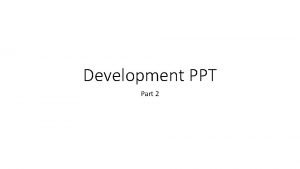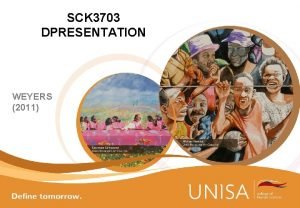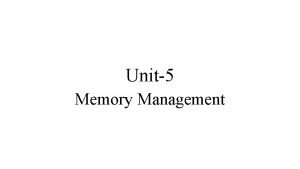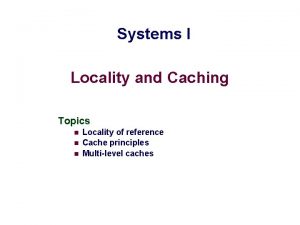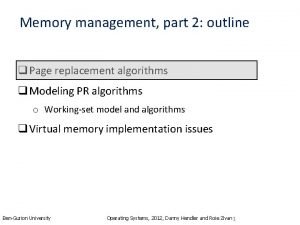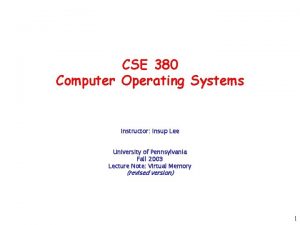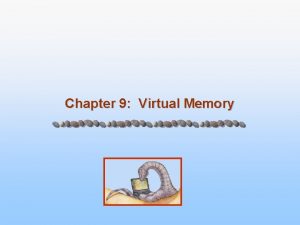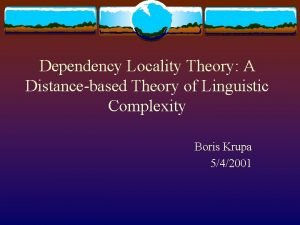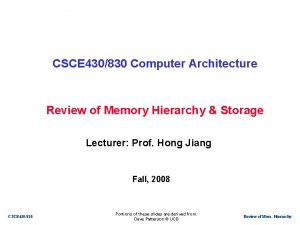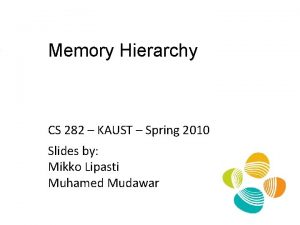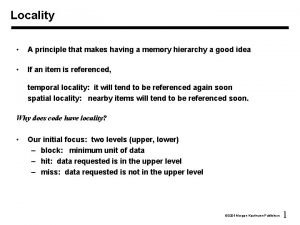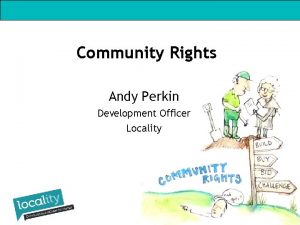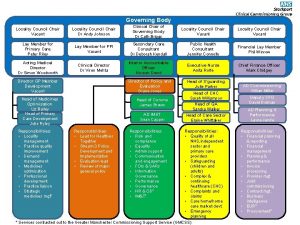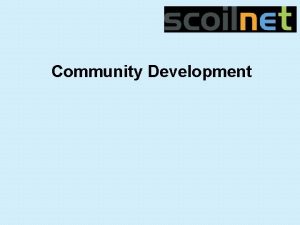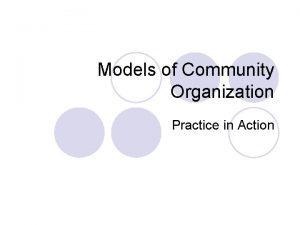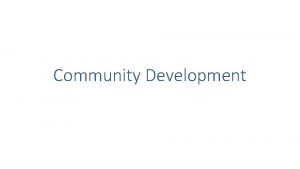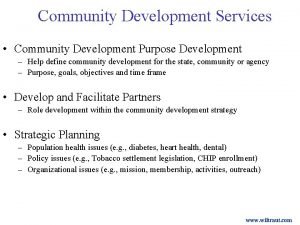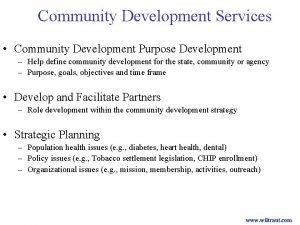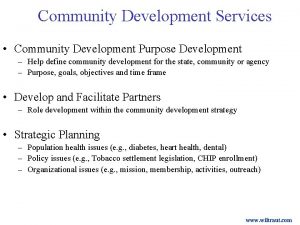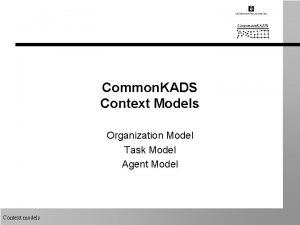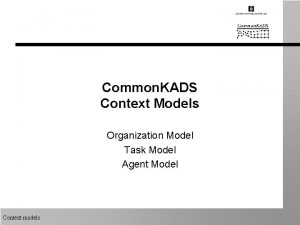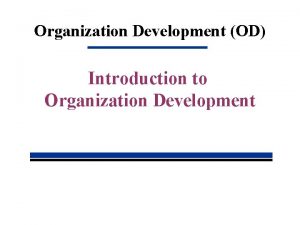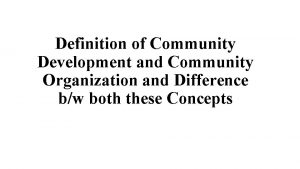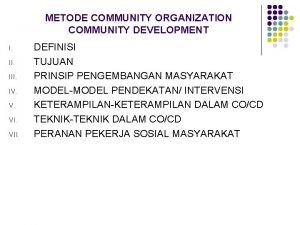MODELS OF COMMUNITY ORGANIZATION 1 LOCALITY DEVELOPMENT MODEL


















- Slides: 18

MODELS OF COMMUNITY ORGANIZATION 1. LOCALITY DEVELOPMENT MODEL 2. SOCIAL PLANNING 3. SOCIAL ACTION

MODELS OF COMMUNITY ORGANIZATION 1. LOCALITY DEVELOPMENT MODEL Defined as a “process designed to improve conditions of economic and social progress for the whole community with its active participations and the fullest possible reliance on the community’s initiative”

Themes of the model: • • • 1. 2. 3. 4. 5. Democratic Procedures Voluntary Cooperation Self-help Development of Indigenous Leadership Education

Effects of model: • Emphasizes self-help and development of community capabilities and cooperation (empowerment). • Increases participation and local leadership.

PROBLEM: • The planner sees the community overshadowed by the larger community and therefore lacks relationships and democratic problem-solving abilities.

SOLUTION: The strategy is to have a broad selection of people get together to determine and solve the community problems. “Let’s meet and talk it over”

MODELS OF COMMUNITY ORGANIZATION 2. SOCIAL PLANNING This model emphasizes a technical approach to solving social problems. Change is believed to require expert planners, who, using technical abilities and skills including the ability to manipulate large bureaucratic organizations, can bring about complex changes.

MODELS OF COMMUNITY ORGANIZATION 2. SOCIAL PLANNING The planner usually establishes, arranges and delivers goods and services to people who need them.

SOCIAL PLANNING • Emphasizes solving community problems • Task oriented with the emphasis on completing a concrete task and solving problems.

PROBLEM: • The planner sees the community as having major social problems such as physical or mental, housing, and or some problems of interest to the planner.

SOLUTION: • The planner gathers the facts and decides what to do with it. “Let’s gather the facts and solve the problem” The change tactic is CONCENSUS or CONFLICT.

SOCIAL PLANNING • The role of the practitioner is more technical by gathering data, implementing programs and interacting with bureaucracies. • The clients are the consumers of services

MODELS OF COMMUNITY ORGANIZATION 3. SOCIAL ACTION This model assumes that a disadvantage segment of the population needs to be organized, at times in alliance with others, to make adequate demands on the larger society.

SOCIAL ACTION • Emphasize a redistribution of power, resources and relationship and changes in basic institution (community competence) • Providing or establishing new services, or getting legislation passed

PROBLEM: • The planner views the community as a system of privileges and power with a disadvantaged population and the problem is social injustice, deprivation, and inequity or exploitation at the hands of the oppressors such as the “power structures, big government or society”

SOLUTION: • The strategy is to identify the issues so people know who is the enemy. • Organize mass action to pressure enemy. (Enemy may be an organization or person) “Lets crystalize the issue, organize mass action, and apply pressure on the selected targets”

SOCIAL ACTION • This model uses change tactic of conflict or contrast, such as confrontation and direct action or negotiation. • The practitioner is an activist or plays an advocacy role and organizes groups and manipulates organizations and movements to influence the political process.

SOCIAL ACTION • The power structure is viewed as an external target of action or an oppressor to be coerced or overturned. • The boundary is a community segment that is deprived. • The clients are the victims of the system.
 Concrete example of locality development
Concrete example of locality development Models of community development ppt
Models of community development ppt Historical background of community
Historical background of community What is the difference between modals and semi modals?
What is the difference between modals and semi modals? Community education model weyers
Community education model weyers Multi memory
Multi memory Locality of reference
Locality of reference Locality of reference in os
Locality of reference in os Locality of reference in os
Locality of reference in os Spatial locality
Spatial locality This approximates a program's locality.
This approximates a program's locality. A dance that shows imagery combat duel.
A dance that shows imagery combat duel. Plastic ban in your locality project work methodology
Plastic ban in your locality project work methodology Good locality
Good locality Dependency locality theory
Dependency locality theory Locality principle in computer architecture
Locality principle in computer architecture Teknik mapping pada memori
Teknik mapping pada memori Locality of reference
Locality of reference Principle of locality
Principle of locality
